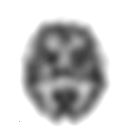
Photo from wikipedia
Status epilepticus (SE) is a clinical emergency with high mortality. SE can trigger neuronal death or injury and alteration of neuronal networks resulting in long-term cognitive decline or epilepsy. Among… Click to show full abstract
Status epilepticus (SE) is a clinical emergency with high mortality. SE can trigger neuronal death or injury and alteration of neuronal networks resulting in long-term cognitive decline or epilepsy. Among the multiple factors contributing to this damage, imbalance between oxygen and glucose requirements and brain perfusion during SE has been proposed. Herein, we aimed to quantify by neuroimaging the spatiotemporal course of brain perfusion during and after lithium-pilocarpine-induced SE in rats. To this purpose, animals underwent 99mTc-HMPAO SPECT imaging at different time points during and after SE using a small animal SPECT/CT system. 99mTc-HMPAO regional uptake was normalized to the injected dose. In addition, voxel-based statistical parametric mapping was performed. SPECT imaging showed an increase of cortical perfusion before clinical seizure activity onset followed by regional hypo-perfusion starting with the first convulsive seizure and during SE. Twenty-four hours after SE, brain 99mTc-HMPAO uptake was widely decreased. Finally, chronic epileptic animals showed regionally decreased perfusion affecting hippocampus and cortical sub-regions. Despite elevated energy and oxygen requirements, brain hypo-perfusion is present during SE. Our results suggest that insufficient compensation of required blood flow might contribute to neuronal damage and neuroinflammation, and ultimately to chronic epilepsy generated by SE.
Journal Title: Metabolic brain disease
Year Published: 2021
Link to full text (if available)
Share on Social Media: Sign Up to like & get
recommendations!